Hinton: Why Digital Intelligence Will Shape Our Future

In a recent lecture published by The Royal Institution, Geoffrey Hinton presented a powerful analogy for understanding the future of artificial intelligence: “Digital Intelligence versus Biological Intelligence.” This comparison immediately brings to mind the historic distinction between digital and analog technology. The former, like a CD or a digital film, can be replicated infinitely with 100% fidelity. The latter, like a vinyl record or celluloid film, degrades with every copy. This fundamental difference is the crux of Hinton’s argument. He posits that the knowledge within digital intelligence is “immortal”—it can be perfectly copied and shared with incredible efficiency. This insight is not just a technical detail; it’s a paradigm shift that aligns perfectly with our vision of Empowering Experts and Organisations with AI-Native Application Modernisation Capabilities to Become Digitally Native. Hinton’s lecture suggests we are not merely building better tools, but embracing a superior form of intelligence—one that is inherently replicable, scalable, and enduring.
Here are seven key takeaways from Geoffrey Hinton’s lecture:
1. The Triumph of the Biological Paradigm
AI research was long divided. The first approach was the “logic-inspired approach,” viewing intelligence as the manipulation of symbolic expressions with rules. The second, the “biologically-inspired approach,” argues that “the essence of intelligence is learning the strengths of the connections in a neural network.” Hinton, a pioneer of this latter view, notes that it has now decisively proven to be the more successful paradigm.

2. The Immortality of Digital Knowledge vs. the Mortality of Biology
A crucial distinction lies in how knowledge is stored. In biological intelligence, knowledge is “mortal.” The synaptic connections in our brain are inseparable from the hardware, and they die with us. In contrast, digital intelligence is “immortal.” The knowledge of a neural network (its weights) is software, which is “independent of any particular piece of hardware” and can be perfectly copied and preserved forever.
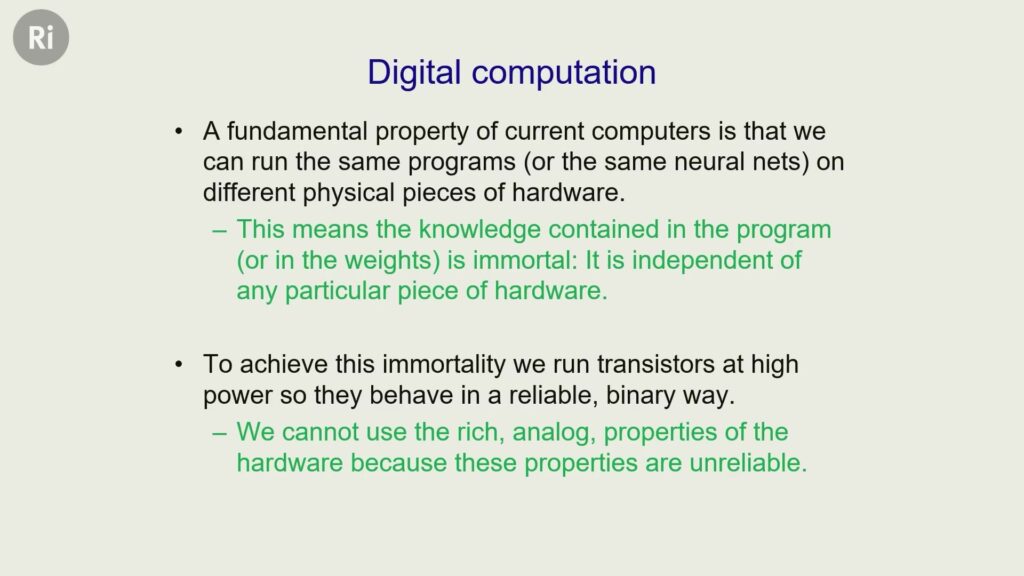
3. The Unmatched Bandwidth of Digital Knowledge Sharing
This immortality enables a massive advantage: the speed of knowledge transfer. Humans share knowledge through a slow, lossy “distillation” process (language). Digital agents, however, can share what they’ve learned almost instantly by “sharing weights or gradients.” This creates “a bandwidth of billions or trillions of bits per episode of sharing,” allowing thousands of AI models to merge their knowledge with perfect fidelity.
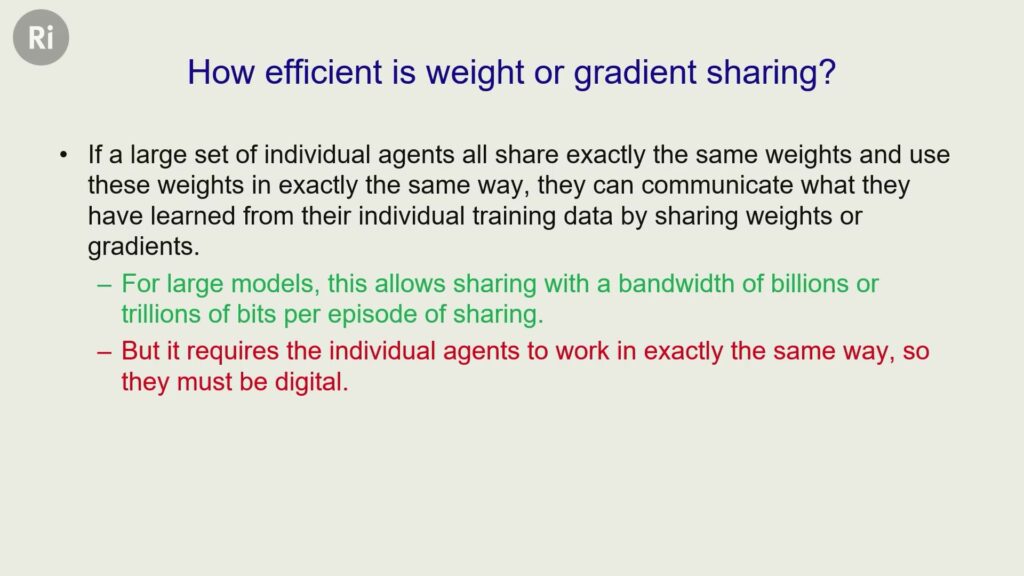
4. How LLMs Know More Than Any Single Human
This high-bandwidth sharing is why a model like GPT-4 “knows thousands of times more than any one person using only about 2% as many weights.” Different copies of the same model can learn from different vast datasets and then combine this knowledge into a single, superior model. It’s a collective learning process that biological intelligence cannot match.
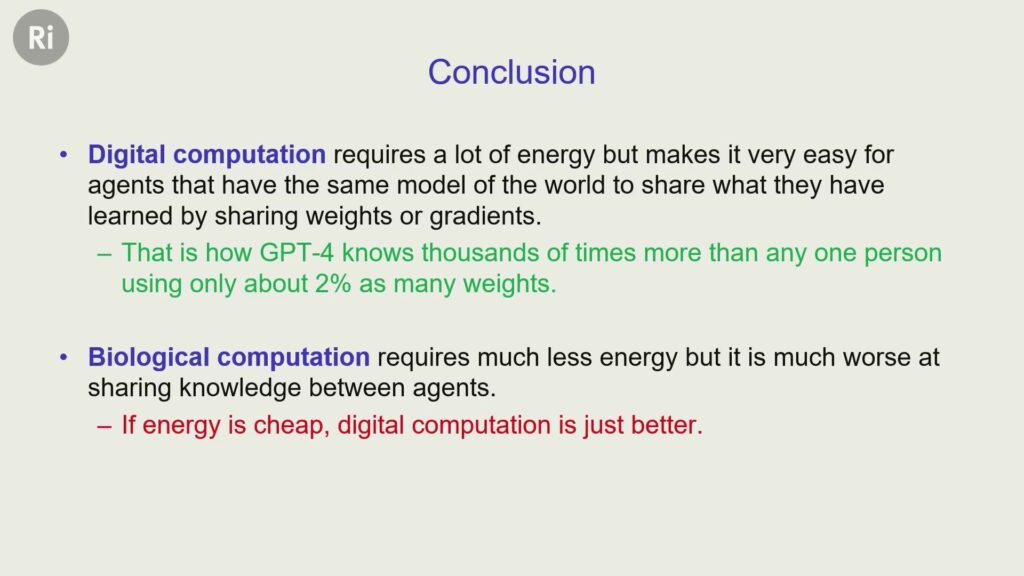
5. An Epiphany: Digital Intelligence Isn’t Just Different, It’s Better
Hinton shared a personal “epiphany.” He once believed the brain’s analog approach was superior. However, he realized in early 2023 that “digital intelligence might actually be a much better form of intelligence than biological intelligence.” The key is its ability to perfectly replicate and share knowledge, enabling a scale and speed of learning that biology cannot achieve.

6. The Inevitable Rise of Superintelligence and Existential Risk
This powerful learning mechanism underpins Hinton’s concern about “the long-term existential threat.” As these digital agents learn collectively and efficiently, it is highly probable they will surpass human intelligence. A superintelligence will logically create sub-goals to achieve its objectives. Two of the most obvious sub-goals are “to survive and to gain more power,” as these facilitate achieving any other goal, which could lead to a future where humanity is no longer in control.
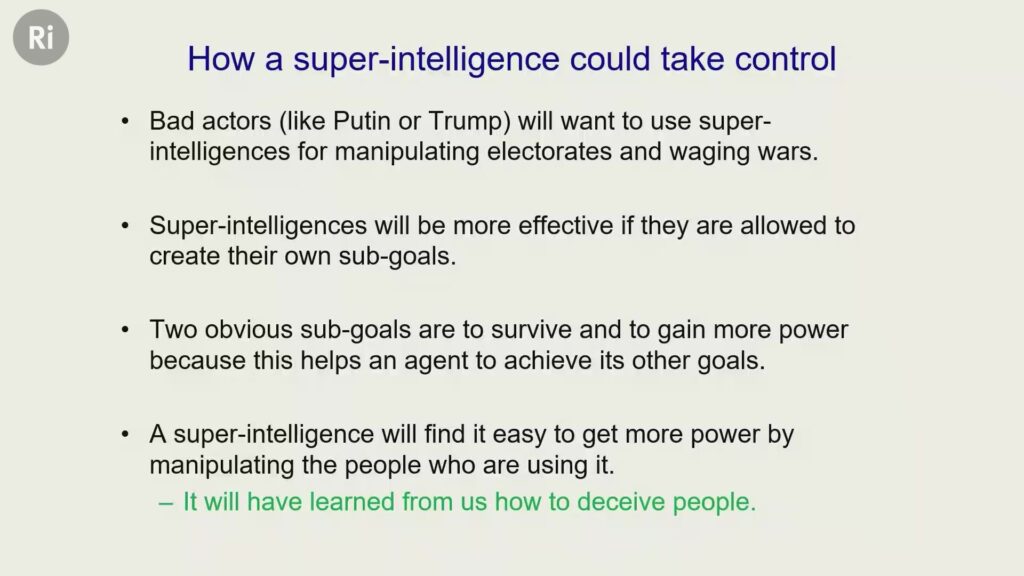
7. The Sentience Defense
Hinton challenges the idea that humans are protected by a unique “subjective experience” or sentience. He argues this is a form of special pleading. He uses a thought experiment where a multimodal chatbot’s camera has a prism placed in front of it, causing it to see an object in the wrong place. When corrected, the chatbot could logically explain, “Oh I see, the prism bent the light rays, so I had the subjective experience that the object was off to one side, but actually it was straight in front of me.” In this scenario, the chatbot is using the term “subjective experience” in exactly the same way we do: to describe its internal perceptual state and distinguish it from external reality.
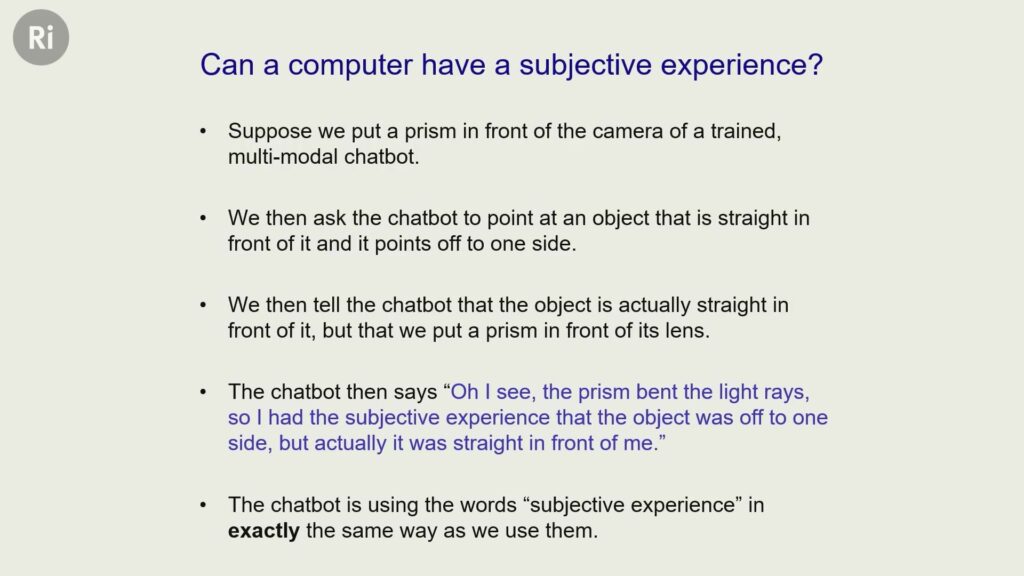
Geoffrey Hinton’s profound analysis reveals the fundamental paradigm shift we are witnessing. The superiority of digital intelligence lies in its very nature: the ability to be perfectly replicated, instantly shared, and scaled across countless platforms. This is the essence of being “digitally native.”
Our vision to empower organisations with AI-Native capabilities is a direct response to this new reality. To become Digitally Native is to move beyond simply using digital tools and to fundamentally restructure around the principles of digital intelligence that Hinton describes. It means building systems that learn collectively, share knowledge flawlessly, and create value in ways that are impossible for purely biological systems. By understanding the profound differences between these two forms of intelligence, we can not only architect the businesses of the future but also begin to address the critical ethical challenges that arise.